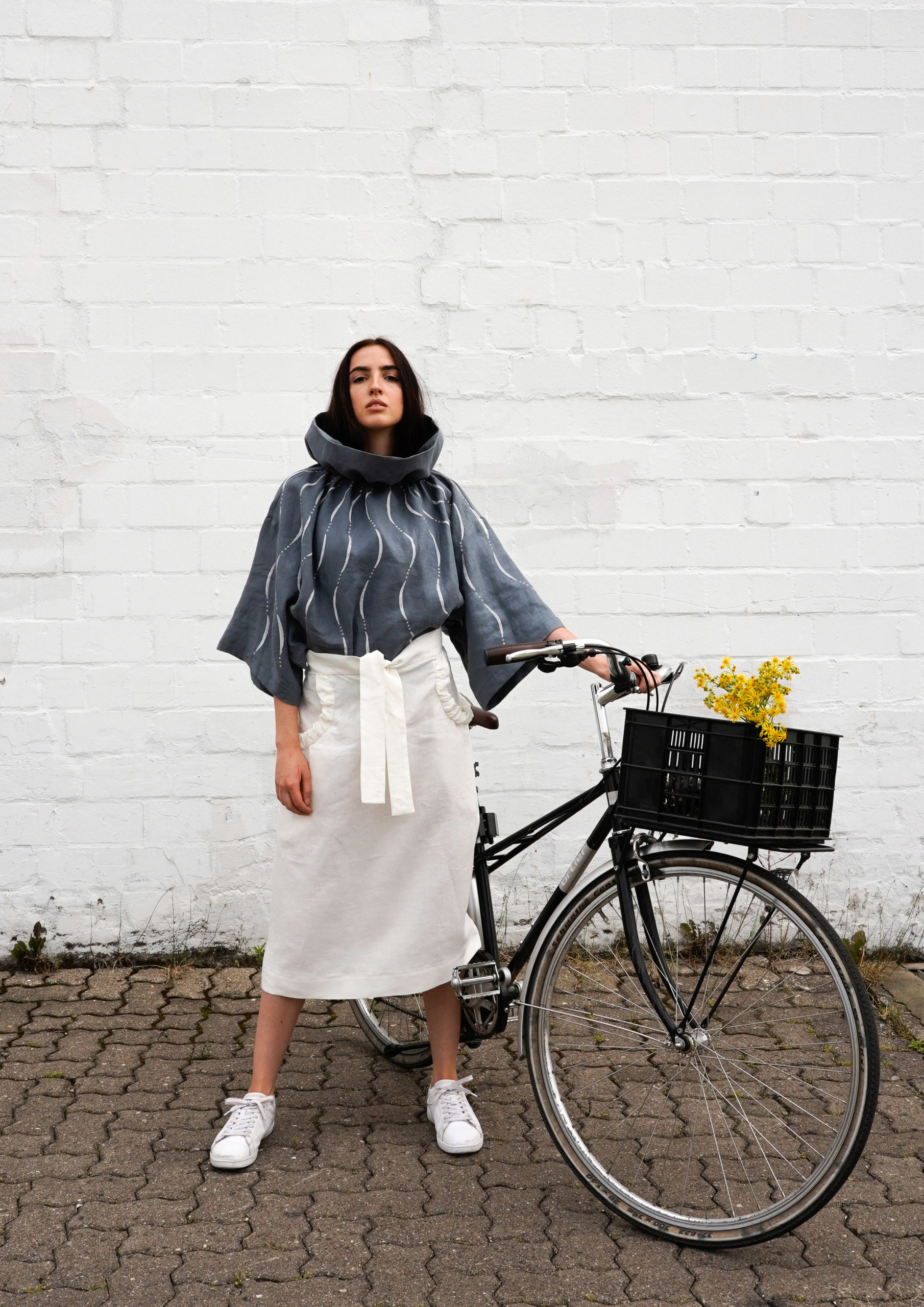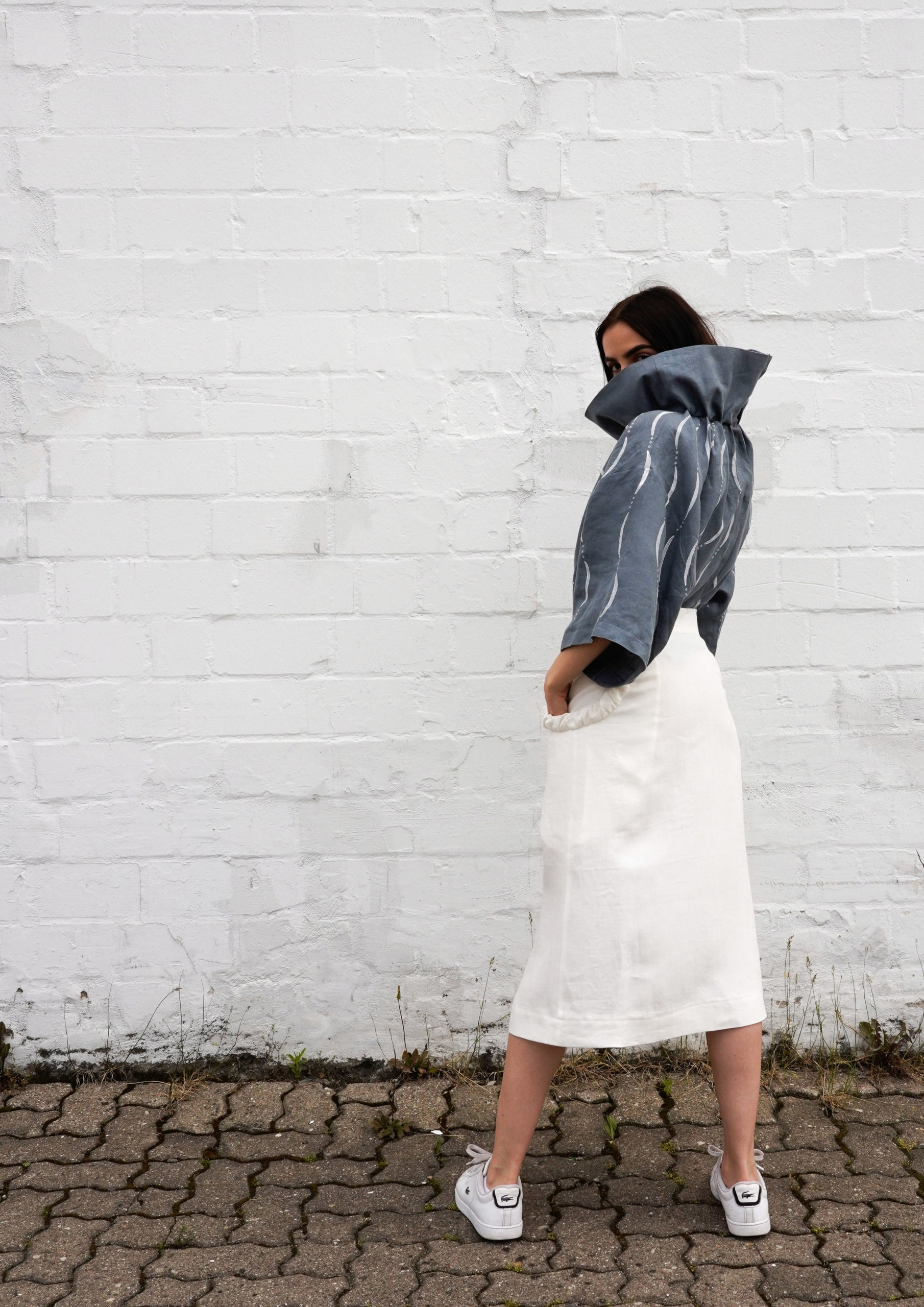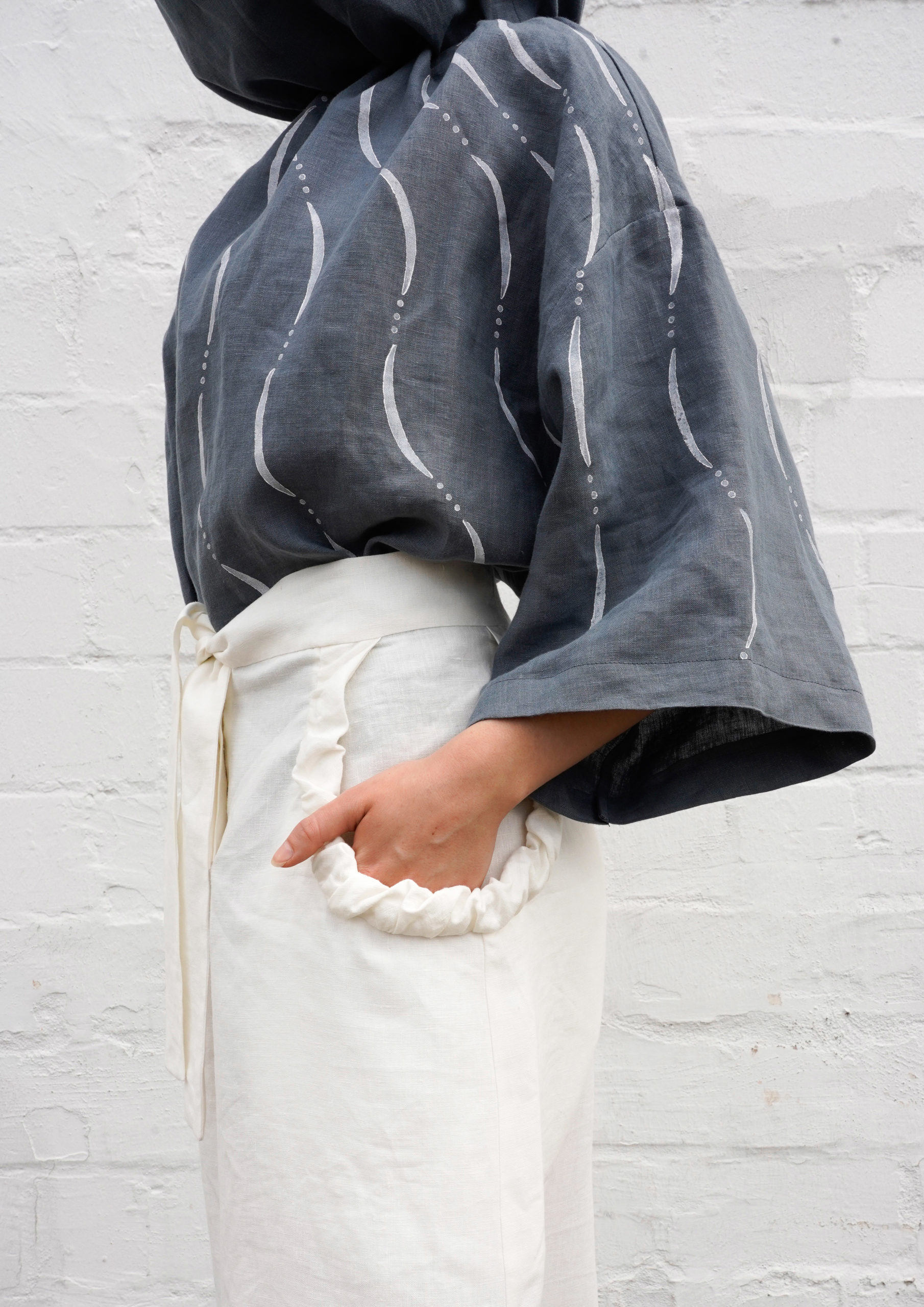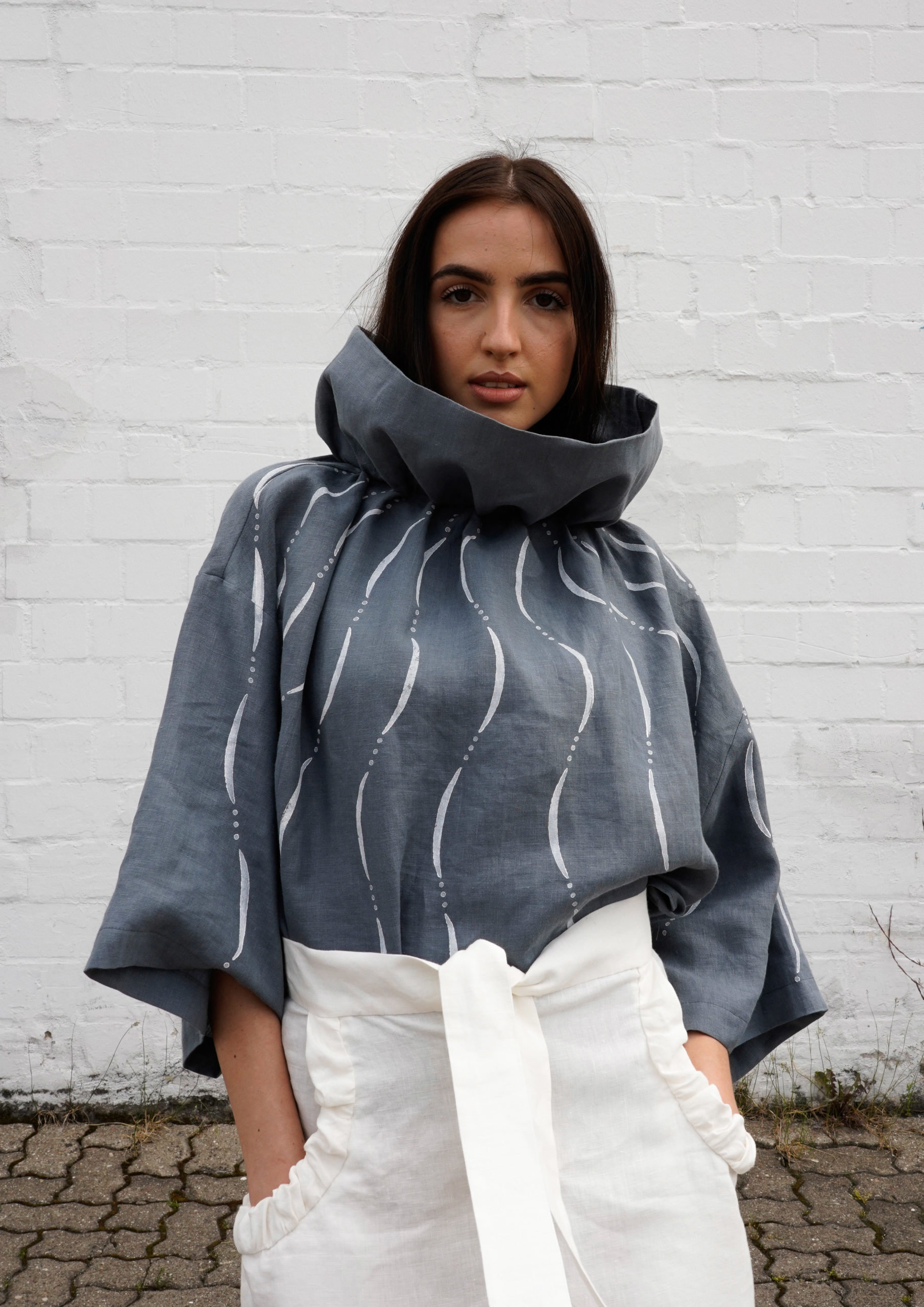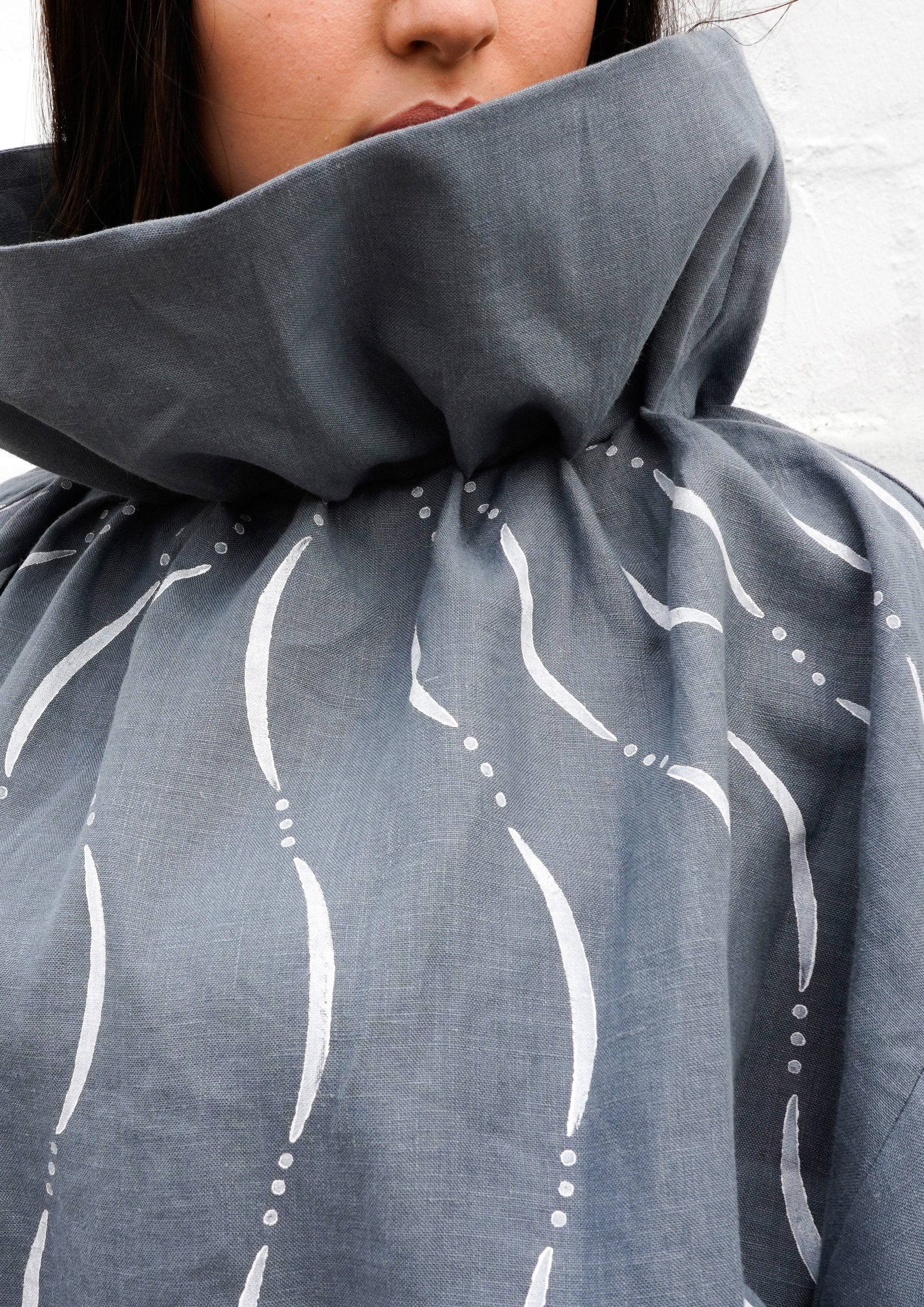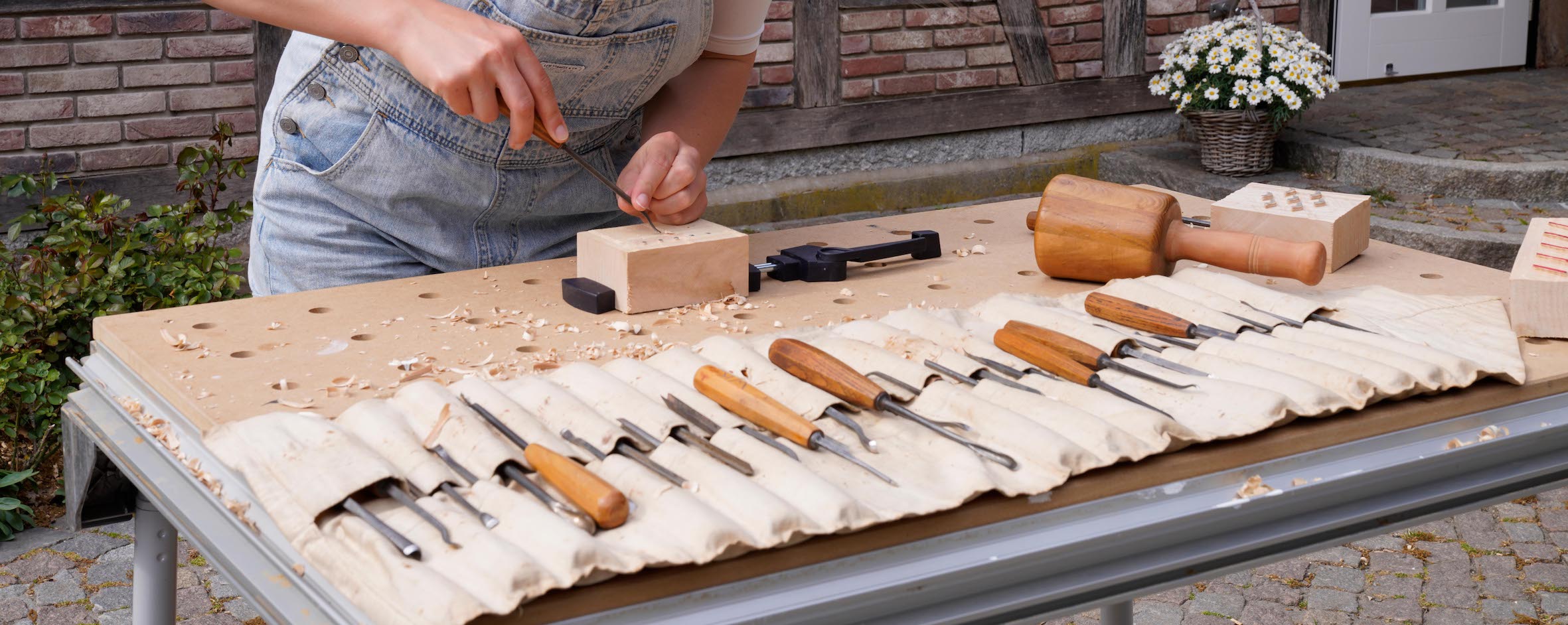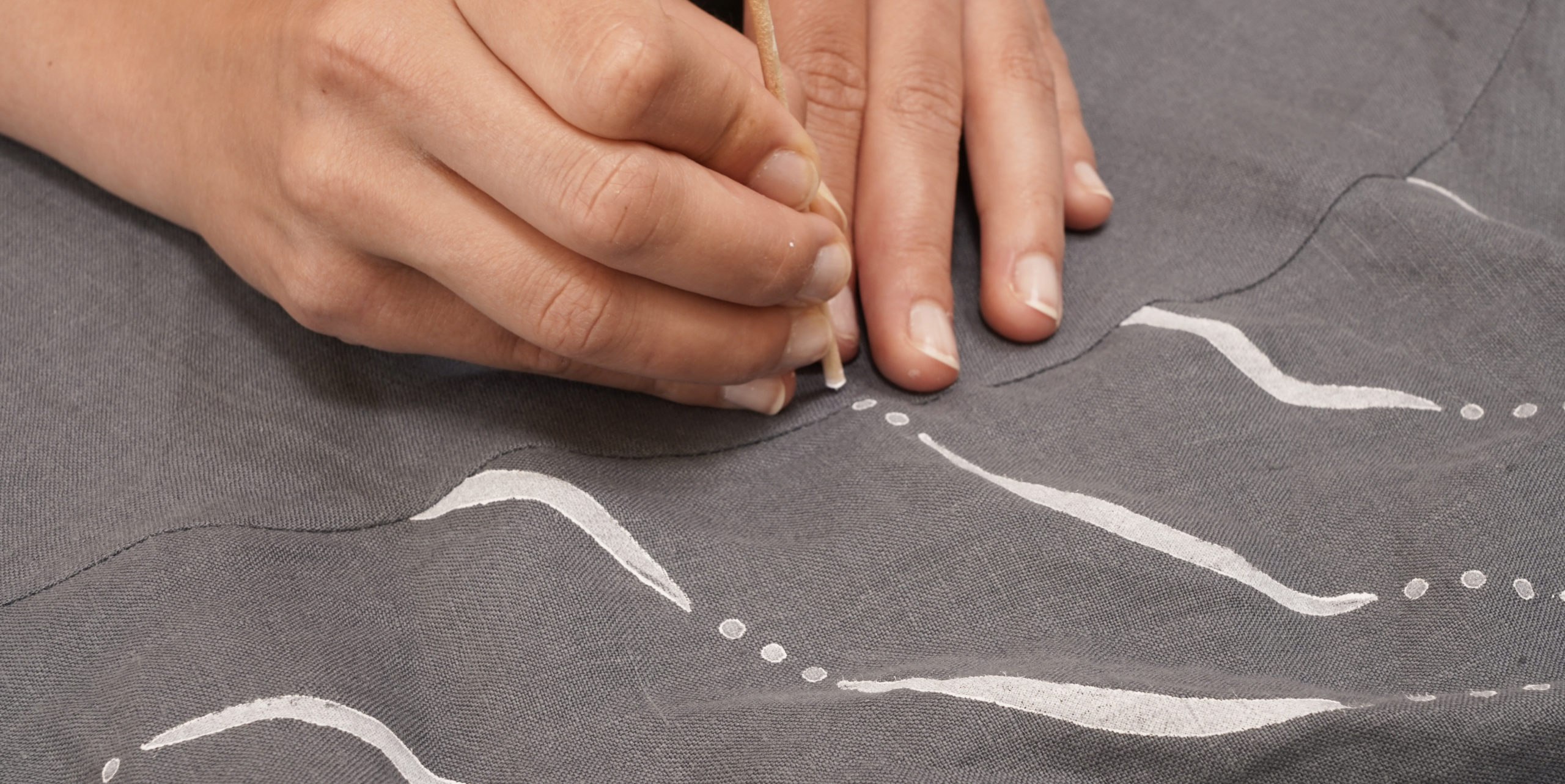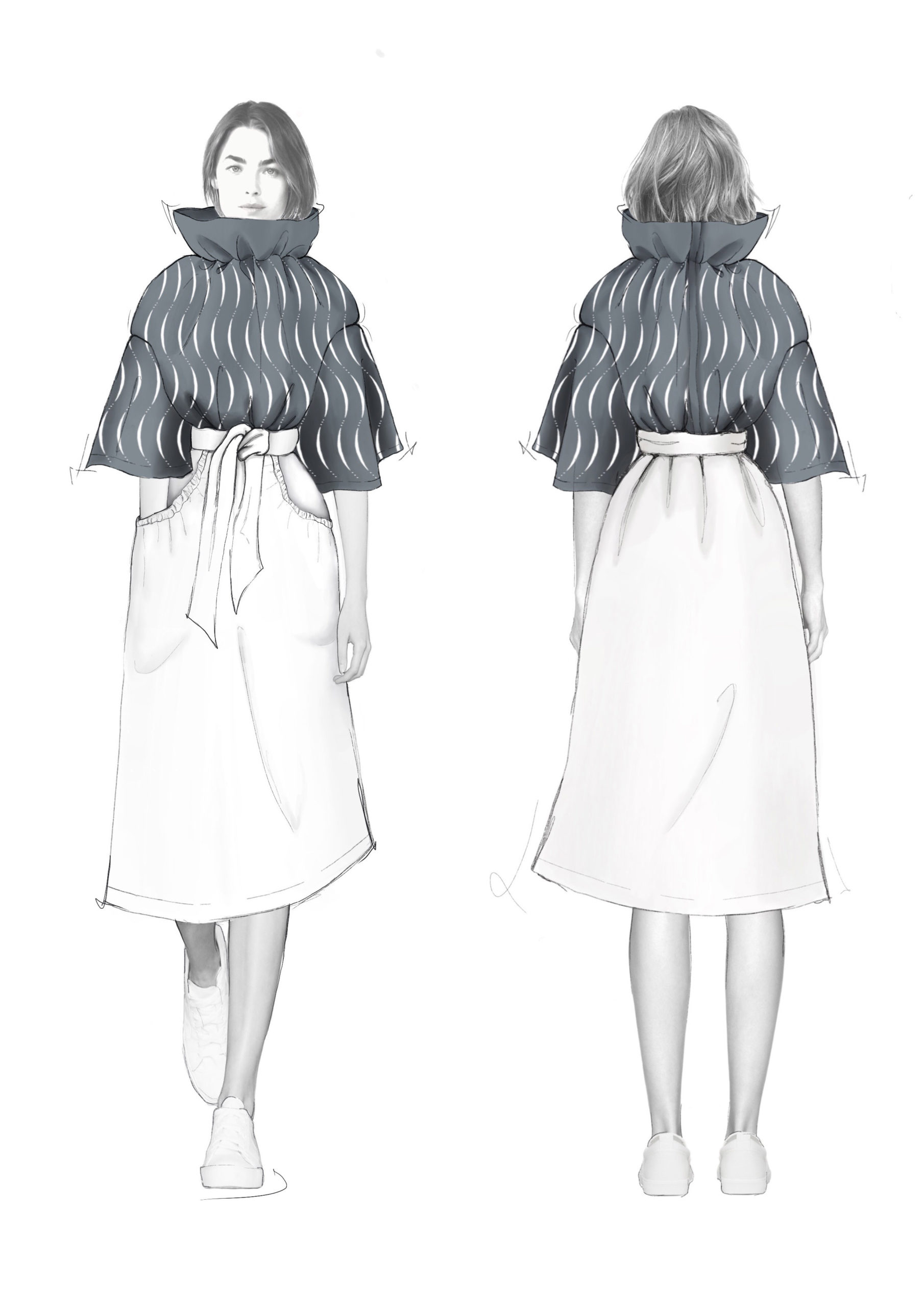COALESCENCE
The round shape is decisive for the design language of the collection. It is partly designed to be far from the body, giving the wearer a sense of well-being and partly to create a fit for every body shape. The poppy seed capsule has an upwardly open shape, which, transferred to the clothing, creates an accentuation of the head. Thus, the human being as an individual embodies the main focus. This idea is closely linked to the principle of minimalism, where clothing has a supporting function of the individual and not presenting ones body. Therefore, prejudices against people with different body shapes are avoided.
A draped top with a poppy seed silhouette is combined with a calf-length skirt. The neckline of the top is draped in order to reveal only half of the face while still being emphasized by the opening form. Wide sleeves which fall over the crook of the arm accentuate the O-silhouette of the outfit. The white skirt contrasts with the blue-grey top. The white print of the top combines the two opposing shapes and lets the skirt overflow into the top. The flowing, yet geometric shape of the print, which runs in the shape of the cut parts, creates a contrast ending in the flowing shape of the collar. The skirt is closed at the waist with a button placket and a knotable waistband and has gathered, large pockets that extend from the front to the side seam and just into the back. This gathering brings out the feminine side of the outfit.
The professions of wood sculptors and wood carvers developed centuries ago. The flowing cutting of the material with appropriately shaped tools allows a natural form to emerge. In contrast to working on stone, it is the course of the grain and growth of the wood itself that the person working on it has to deal with and arrange. The multitude of carving tools, their sharpness and the wood material itself must form a unit, as carving always means removing material to create a new form. In today’s technically advanced times, this process would be optimized and perfected with a 3D printer or laser. However, it is the imperfect areas of the printing stamp that give the print on the textile a unique and handmade appearance. This traditional technique may seem time-consuming and inconvenient, but if you take a closer look at it, you will see that handmade production creates a connection with the created object, which is reflected in the print.
